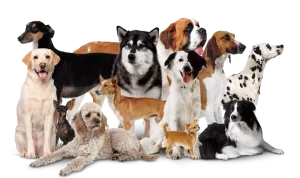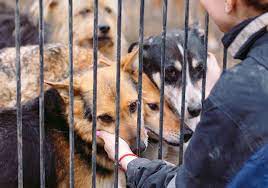Table of Contents
ToggleFascinating Facts About Dogs: Man’s Best Friend
Dogs have been loyal companions to humans for thousands of years, winning hearts worldwide. From their intriguing history to unique physical and behavioral traits, there’s always something new to learn about them. Let’s explore what makes dogs so special.
History of Dogs
Dogs hold the title of being humanity’s earliest domesticated friends, bridging the gap between wild wolves and trusted companions.
Domestication Timeline
Dogs were first domesticated from wolves more than 14,000 years ago, making them the oldest domesticated species. According to Britannica’s history of the dog, this process likely began when wolves scavenged near human camps, forming a mutually beneficial relationship. Over time, selective breeding shaped wolves into the dogs we know today, rooted in trust and cooperation.
Breeds and Varieties
The diverse appearances of modern dogs are no coincidence. With over 400 unique breeds, dogs have been shaped by human preferences and needs. For example, Retrievers were bred to assist hunters, while smaller breeds like the Chihuahua became popular for companionship. Each breed carries distinct traits, as detailed in this comprehensive history of selective breeding and evolution.
Roles in Human Society
Dogs have revolutionized human life in numerous ways. In ancient times, they protected livestock and aided in hunting. Today, they serve as guide dogs for the visually impaired, therapy companions, and even support search-and-rescue teams. Their adaptability demonstrates why they’ve thrived alongside us for millennia.

Photo by Ilargian Faus
Unique Physical Traits
Dogs’ biology is a wonderland of unique features that set them apart from other animals.
Sense of Smell
Did you know a dog’s sense of smell is 40 times more powerful than ours? They boast 300 million olfactory receptors, compared to a human’s 5 million. This superpower enables them to detect faint scents like explosives or even diseases. Learn more about their physical traits from the Merck Vet Manual.
Vision and Hearing
Dogs see the world quite differently than we do. While their color perception is limited to yellows and blues, they excel in night vision. Their ears? Just as remarkable! Dogs can hear sounds four times farther away than humans, detecting frequencies we can’t perceive.
Physical Attributes
From teacup Chihuahuas to towering Great Danes, dogs vary immensely in size and shape. Their coat colors, textures, and patterns are as diverse as their habitats, evolving to suit their environment and function.
Behavioral Traits
Behavior is another area where dogs never fail to amaze. Their intelligence and adaptability make them more than just pets – they’re family.
Social Structure
Like wolves, dogs thrive in social groups. They see their human families as part of their “pack.” This social nature fosters trust and a desire to please, which is why dogs are so trainable.
Communication Methods
Dogs may not use words, but their communication is crystal clear. They bark, whine, growl, and use body language to express needs and emotions. For instance, a wagging tail often signals happiness, but its position can reveal more about their mood.
Problem-Solving Skills
Dogs are surprisingly intelligent and capable of solving complex problems. From learning commands to mastering puzzles, breeds like Border Collies and Poodles stand out for their sharp minds. Curious about breed-specific behavior traits? Check this out.
Interesting Facts About Dogs
Let’s uncover some surprising and fun dog facts that might just blow your mind!
Cognitive Abilities
Did you know dogs can learn up to 250 words and gestures? Their intelligence often mirrors that of a two-year-old child. Dogs also have a sense of time! They may anticipate your return home based on internal rhythms.
Health and Lifespan
On average, dogs live 10–13 years, depending on their breed. Smaller dogs like Dachshunds tend to live longer, while larger ones like Saint Bernards may have shorter lifespans. Common health issues include hip dysplasia and heart conditions, so regular vet visits are essential.
Cultural Impact
Dogs appear in countless myths, movies, and books. From Lassie to Disney’s Pluto, they’ve captured the imagination of people across generations. Dogs also symbolize loyalty in many cultures, cementing their role as not just pets, but icons too. For more fascinating insights, visit National Geographic’s Dog Facts for Kids.
Conclusion
Dogs have been by our side through thick and thin, shaping human history, offering companionship, and bringing joy every single day. Their loyalty and love remind us why they’ve earned the title of “man’s best friend.” Whether through their unique traits or selfless behaviors, dogs continue to show why they are so deeply cherished. So next time you look into those wagging tails or happy eyes, remember there’s more to them than meets the eye. Appreciate your four-legged friend, and cherish the bond you share forever!






![The Ultimate Guide to Road Tripping with Your Dog [2025 Update]](https://bellabeanupdate.com/wp-content/uploads/2025/05/pexels-photo-1143369-300x209.jpeg)

























